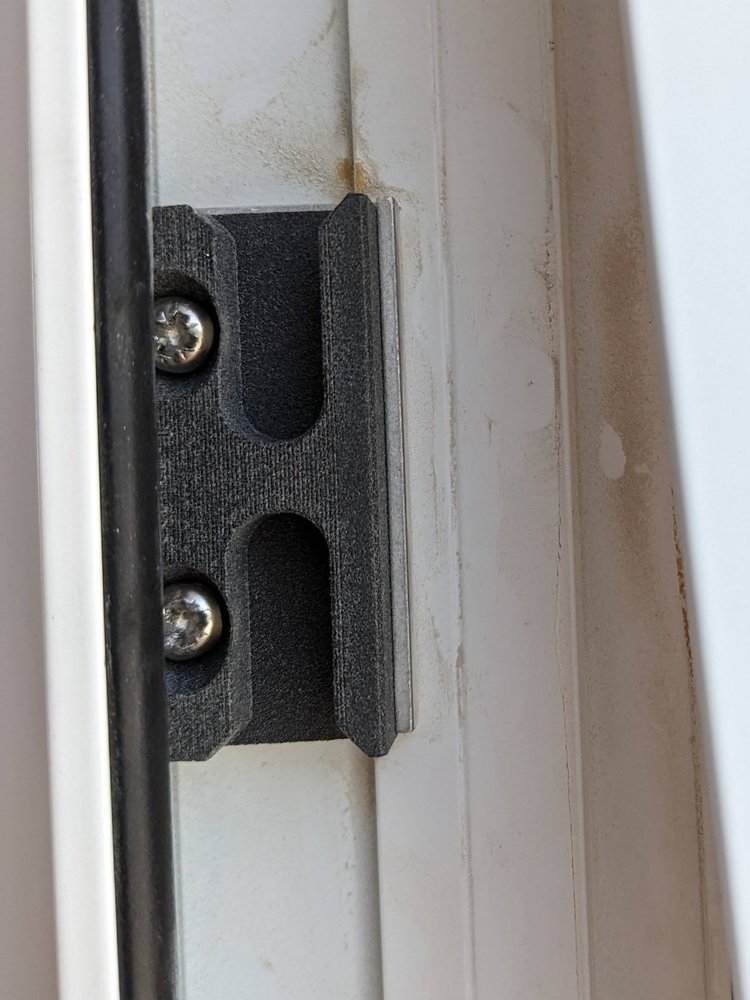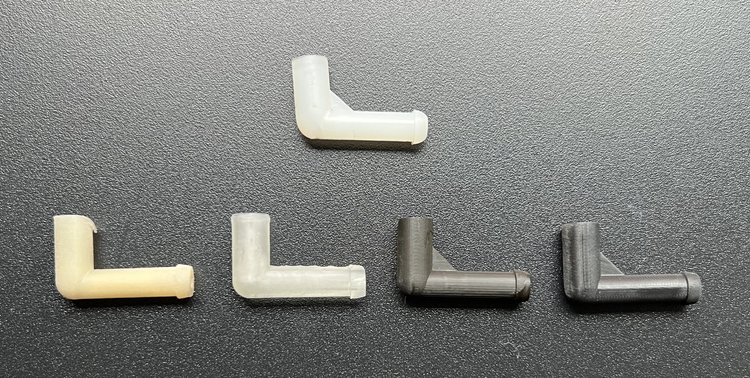In the throes of the COVID-19 pandemic, Jett3D, an innovative 3D printing company, emerged under the savvy leadership of CEO Katie Snediker. Launched in July 2020, during a period marked by worldwide uncertainty, Snediker used her deep-rooted expertise in market research and analytics to pioneer a unique, hands-on approach to 3D printing. “I wanted to do something a little more physical,” Snediker recalled, reflecting on her childhood, which was shaped by the construction industry.
Snediker’s journey to 3D printing was unconventional. After leaving her role at Weber Shandwick, a major PR firm, she decided to dive headfirst into 3D printing through an unpaid internship. This hands-on immersion into the world of 3D printing pre-dated the pandemic, but when COVID-19 brought the world to a standstill, Snediker saw an opportunity to take her experience and forge a new path.
“We were just hearing from a lot of people that needed assistance [with 3D printing]… there was a real push for volume [in the industry], but when it came to the actual client project management, like a specialized approach to 3D printing there wasn’t [anything],” she explained.
Snediker perceived a vacuum in the market – a space where more personalized, consultative solutions in 3D printing were needed. And with the world on pause, the risks of launching a new venture seemed strangely diminished.
Snediker’s background in market research equipped her with the essential project and client management skills, crucial in dealing with larger businesses. Working with such teams requires a different level of professionalism, a lexicon of ‘corporate lingo,’ and a nuanced approach. Her central focus? Understanding her clients’ needs.
This insight-driven approach powers Jett3D’s offerings. The company is not just about creating physical parts or prototypes; but providing consultative services, understanding the intended function of each part, and tailoring the materials and design accordingly. Snediker cited the example of a facade company that needed durable, engineering-grade parts for a skylight project, contrasting it with a simpler filler plastic piece needed in another instance.
In this era of transformation, Snediker and Jett3D demonstrate that understanding and fulfilling client needs – whether it’s 3D printed parts or consultation services – remains paramount. The company’s journey from a pandemic-born idea to a burgeoning enterprise emphasizes the power of innovation and the value of deeply understanding your market.

Current Structure and Team of Jett3D
Jett3D started with three co-founders, two of whom remain actively involved. One of the original co-founders left to pursue a more creative path, whereas Jett3D has been focusing more on practical applications, making the company a less-than-ideal fit for her.
The remaining co-founder is a mechanical engineer who plays a significant role in the company, particularly with regards to material selection. As the company continues to grow, Snediker recognizes the increasing need to hire a production manager, although she has not yet done so.
The company also works with various freelancers, including an architect who specializes in Building Information Modeling (BIM) and individuals who help with jewelry and patent drawings, another new area the company has started exploring.
Technologies, Volume, and Applications
Jett3D utilizes multiple 3D printing technologies, such as Fused Deposition Modeling (FDM), Stereolithography (SLA), Selective Laser Sintering (SLS), and Multi Jet Fusion (MJF). For specialized requirements, they outsource to partners such as Fast Radius. The company primarily uses HP’s MJF, preferring PA 11 and PA 12 materials.
Currently, Jett3D doesn’t aim to become a volume manufacturer, instead focusing on forming long-term relationships with its clients. Their projects range from prototyping to larger orders. Although they have occasionally worked on orders of up to 50,000 pieces, their average production volume is typically in the range of 5 to 200 units.
Jett3D primarily targets end-use applications, focusing on high-fidelity materials that produce parts intended to be functional, durable, and possess unique properties. The automotive industry and construction applications serve as their primary areas of interest. They work on smaller, often overlooked parts that can be 3D printed and customized to the client’s needs.
Jett3D also collaborates with engineers and designers, helping translate their CAD drawings or sketches into 3D printable files. They maintain a dialog with their clients, ensuring that they fully understand the 3D printing process. The company has found that working with businesses can be more efficient and less price-sensitive, allowing them to better meet the client’s requirements without cutting corners.
When asked about the competitive landscape of her industry, Snediker had an intriguing take: “We’re not really competing with other companies. Occasionally we may compete on price, but our value proposition differs. Where we shine is in the business-to-business and consultative realm.” This means that Jett3D isn’t locked in a battle for the lowest price point; instead, they’re offering a value-added service, particularly to companies that aren’t quite sure how to leverage 3D printing to their advantage.
Unfurling her company’s sales strategy, Snediker divided its approach into three distinct “funnels”: repeat business, LinkedIn outreach, and organic search. Interestingly, despite investing time and resources in developing strategies around email and phone call sales, the standout success has come from LinkedIn. Snediker emphasized their effort to create engaging, thoughtful content that walks a delicate balance between demonstrating authority and retaining an approachable tone.
Finally, when asked about the pain points within the 3D printing technology platforms, Snediker’s response honed in on one key area: color. Many of Jett3D’s clients, particularly those working on building projects, require precise color matching. Snediker said, “We get a lot of requests for color, it tends to be like these construction facade projects often need color matching. It’s a very specific thing, but we get a lot of requests for it.”

Spreading Additive Adoption
In the shifting arena of 3D printing, the elusive concept of million part production runs or high volume production holds a particular allure. This phenomenon often presents as a periodic trend, appearing and disappearing on the industry’s horizon. Snediker touched upon the example of recent high-volume 3D printing projects, like the Adhesives Technology order for 1 million epoxy tube hangers from Merit3D.
However, she also expressed that there is a lingering apprehension among businesses when it comes to 3D printing, partly driven by concerns over materials’ performance. “I think there’s a lot of mistrust in the materials, understandably, because even until recently, I still get a little nervous sometimes about whether this material will do what it’s supposed to do.”
This paints a picture of the industry’s conundrum: like taking a leap of faith, companies may find it challenging to trust in the capabilities of 3D printing technology fully. Yet, Snediker believes that more case studies and real-world use cases could mitigate this apprehension.
Regarding large-scale production, Snediker clarified, “I think a lot of businesses out there that are doing these larger production runs just think of 3D printing as maybe unreliable or slow, which it is and it isn’t. It can be seen as really expensive, which, again, it is and it isn’t.” The question of speed or price often needs to be reframed, depending on the application; and whether the user can accomplish their goal in any other way. Thinking in less nuanced terms can mean missing out on its true potential.
By working closely with engineers and designers from different businesses, Jett3D aims to help bridge the gap between CAD design and 3D printing, making the technology more accessible and effective for a wider range of applications. They strive to maintain an active dialog with their clients, providing a deeper understanding of the 3D printing process and the unique benefits it can offer.
When asked about any closing thoughts, Snediker expressed a heartfelt sense of joy and gratitude. She stated, “The thing that I like to share with people is just how genuinely happy I am to be doing this. I am so grateful… I genuinely love this company and it’s so cool and so fun. I just enjoy the fun that I have doing it.”
Read more interviews with leaders in the 3D printing industry.
What does the future of 3D printing hold?
What engineering challenges will need to be tackled in the additive manufacturing sector in the coming decade?
To stay up to date with the latest 3D printing news, don’t forget to subscribe to the 3D Printing Industry newsletter or follow us on Twitter, or like our page on Facebook.
While you’re here, why not subscribe to our Youtube channel? Featuring discussion, debriefs, video shorts, and webinar replays. Are you looking for a job in the additive manufacturing industry? Visit 3D Printing Jobs for a selection of roles in the industry.
Featured image shows PDW drone housing. Photo via Jett3D.



